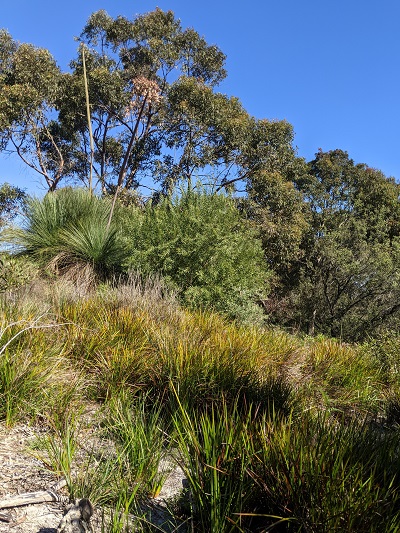Eastern Suburbs Banksia Scrub
What is it?
 Eastern Suburbs Banksia Scrub (ESBS) is a 'critically endangered ecological community' listed under the Biodiversity Conservation Act 2016 (NSW) and the Environment Protection and Biodiversity Conservation Act 1999 (Commonwealth).
Eastern Suburbs Banksia Scrub (ESBS) is a 'critically endangered ecological community' listed under the Biodiversity Conservation Act 2016 (NSW) and the Environment Protection and Biodiversity Conservation Act 1999 (Commonwealth).
More than just a single species or group of plants, ESBS encompasses a unique assemblage of vegetation, fauna, fungi and soil in a specific climatic region.
The community once grew extensively across about 5,300 hectares of land between North Head and Botany Bay in Sydney. But today, less than 150 hectares (or between 1-3%) of the original extent remains. These remnants are scattered across Sydney’s eastern and northern suburbs including Randwick, Botany Bay and Manly, Sutherland Shire and the Royal National Park.
The community is characterised by low-lying sclerophyllous (hard-leaved) heath or scrub plants growing on 100,000-year-old wind-blown dune sands overlying sandstone. The lay of the land allows for some remnants to support small pockets of woodland, low forest or wetter areas where soil deepens, or moisture collects.
Below are some easily identifiable plants commonly seen in an Eastern Suburbs Banksia Scrub community:
- Heath-leaved Banksia (Banksia ericifolia)
- Old Man Banksia (Banksia serrata)
- Wallum Banksia (Banksia aeumula)
- Tick Bush (Kunzea ambigua)
- Coastal Tea-tree (Leptospermum laevigatum)
- Flannel Flower (Actinotus helianthi)
- Tree Broom-heath (Monotoca elliptica)
- Grass Tree (Xanthorrhoea resinosa)
- Pink Wax Flower (Eriostemon australasius)
- Sweet Scented Wattle (Acacia suaveolens)
Why is Eastern Suburbs Banksia important?
ESBS can be found in just a few locations. Within Randwick City, this includes Maroubra to Malabar coastal walk, around Prince Henry in Little Bay and within Randwick Environment Park.
Many indigenous plants found in these patches cannot be reproduced in nurseries as they rely on fungi networks within the soil to thrive. Animals which forage in ESBS such as honeyeater birds, yellow-tailed black cockatoos, blue tongue lizards and ring-tailed possums rely on this habitat for food and safe haven.
Interactions between native pollinators, wildlife, plants and the soils, water flows and fire which sustain them are too complex to be replicated from scratch somewhere new.
Every remaining patch is precious because once gone, it's gone forever.
To learn more: Eastern Suburbs Banksia Scrub: Rescuing an endangered ecological community (nsw.gov.au)
Want to get involved?
- Join Bushcare to revive ESBS at Randwick Environment Park and Prince Henry.
- Start your own Native Haven to provide habitat for wildlife and improve the connection between remnant patches by planting some ESBS species in your garden.
- Contact:
- Randwick City Council Nursery and IndigiGrow (a 100% Aboriginal owned and operated nursery located in La Perouse) have ESBS plants for sale and can provide advice on improving habitat at home. Learn more here.
- Randwick's bushland team via Bushcare@randwick.nsw.gov.au

